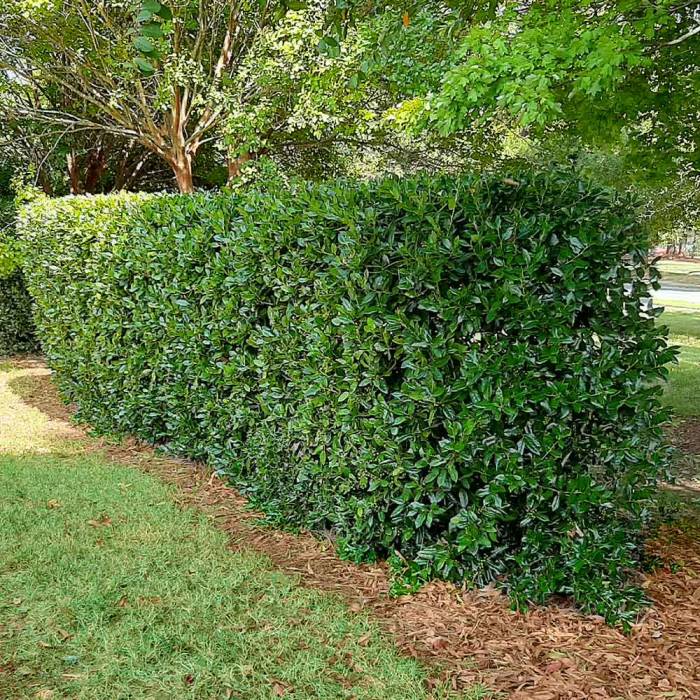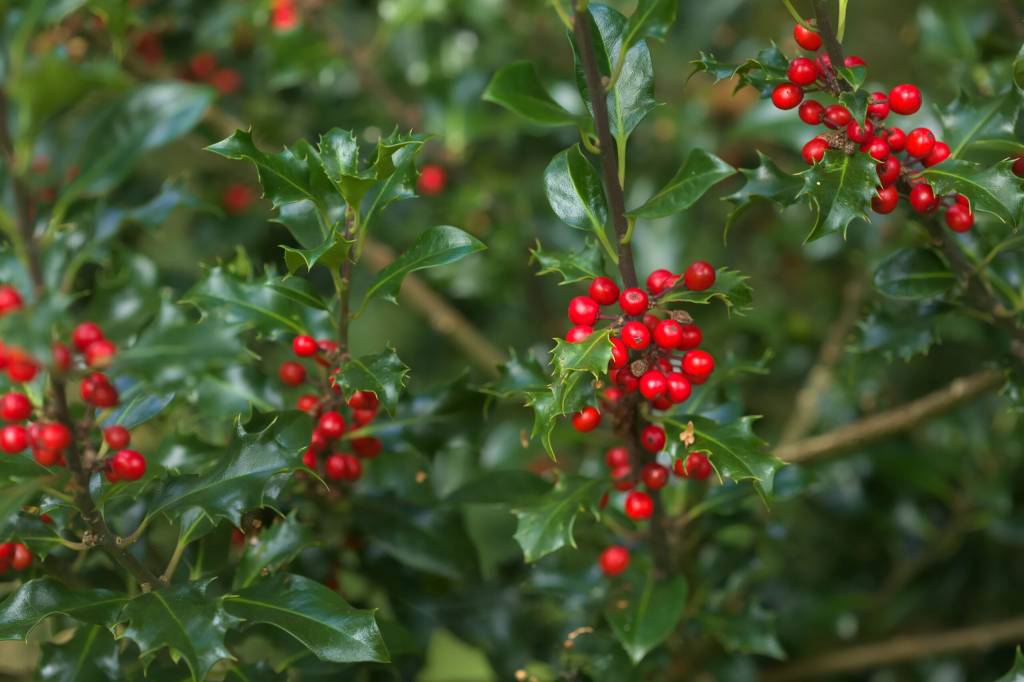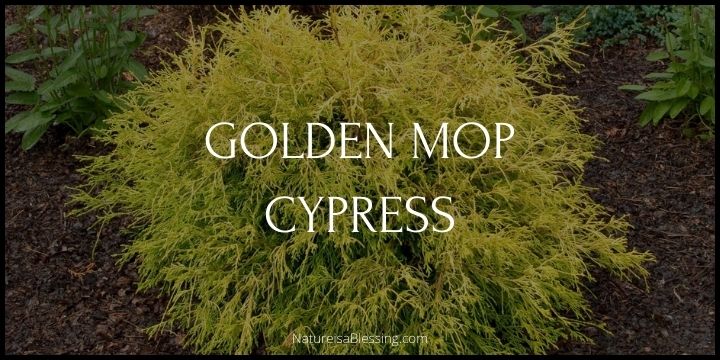Needlepoint Holly: How to Plant, Grow, and Care

What is Needlepoint Holly?
The botanical world is a treasure trove of fascinating species, each with its unique charm. One such gem is the Needlepoint Holly, an evergreen shrub that seamlessly combines beauty, resilience, and versatility.
Needlepoint Holly, scientifically known as Ilex cornuta ‘Needlepoint’, is a member of the Holly family. It’s native to eastern Asia but has been embraced by gardeners worldwide for its striking appearance and hardy nature.
This captivating plant is known for its distinctive glossy, dark green leaves. Each leaf is adorned with multiple spiny points, resembling a needle, hence the name ‘Needlepoint’. But don’t let the spiky foliage deter you; it’s this very feature that adds an intriguing texture to any landscape.
But there’s more to the Needlepoint Holly than just its leaves. Come winter, the plant transforms into a spectacle of bright red berries against the lush green backdrop. This vibrant display persists through the cold months, providing a pop of color when most other plants have succumbed to winter’s grip.
Not only is the Needlepoint Holly a visual delight, but it’s also a practical choice for gardeners. It’s a robust plant that can withstand various weather conditions and is relatively low-maintenance, making it an ideal choice for both novice and experienced gardeners.
Whether used as a standalone feature or part of a hedge, the Needlepoint Holly is sure to add an element of elegance and intrigue to your garden. So next time you’re considering adding a new plant to your collection, why not consider the enchanting Needlepoint Holly? Its year-round beauty and hardiness might just make it the crown jewel of your garden.
Fast Facts About Needlepoint Holly
| Feature | Description |
|---|---|
| Country Or Region Of Origin | East China, Korea |
| Plant Type | Evergreen Shrub |
| Family | Aquifoliaceae |
| Genus | Ilex |
| Sun Exposure | Full Sun to Partial Shade |
| Season of Interest | Year-round (Berries in Winter) |
| Water | Medium |
| Maintenance level | Low |
| Growth rate | Moderate |
| Height | 10-15 feet |
| Spread | 6-10 feet |
| Spacing | 5-6 feet apart for a dense hedge |
| Soil Type | Well-drained, sandy, loamy, clay |
| Soil pH | Acidic, Neutral |
| Soil Drainage | Well-Drained |
| Habit/Form | Upright, Dense |
| Attracts | Birds (for the berries) |
| Characteristics | Glossy dark green leaves with spiny points, red berries in winter |
| Tolerance | Drought, Erosion, Clay Soil, Dry Soil, Air Pollution |
| Suggested Use | Hedges, Privacy Screen, Ornamental Planting |
| USDA Plant Hardiness Zone | 7-9 |

How to Plant and Grow Needlepoint Holly
Planting and growing Needlepoint Holly plants can be a rewarding experience, especially when you see the lush green leaves and vibrant red berries come to life. Here’s a comprehensive guide to help you cultivate this beautiful shrub successfully:
Ideal Growing Conditions
- Soil Type: Needlepoint Holly prefers well-drained soil. It can tolerate a variety of soil types, including sandy, loamy, and clay soils.
- Sunlight: This plant does well in full sun to partial shade. However, for the best berry production, a sunny spot is ideal.
- Climate Requirements: Needlepoint Holly thrives in USDA hardiness zones 7-9. It’s a hardy plant that can withstand cooler temperatures and even drought conditions once established.
Tools and Equipment
- You will need a shovel for planting, a hose or watering can for water application, and pruning shears for maintenance. A soil pH testing kit can also be useful to ensure the soil has the right acidity level.
Planting Instructions
- Dig a hole twice as wide and just as deep as the root ball of your holly. Place the plant in the hole, making sure the top of the root ball is level with the soil surface. Backfill the hole with soil, firming it gently around the base of the plant.
- Water the plant thoroughly after planting. Apply mulch around the base to help retain moisture and prevent weed growth.
Care and Disease Prevention
- Watering: During the first year, water your holly regularly, about once a week or more during hot, dry periods. Once established, the plant is relatively drought-tolerant and will only need watering during extended dry spells.
- Pruning: Prune the holly in early spring to maintain its shape and encourage bushier growth. Always disinfect your pruning tools before use to prevent the spread of disease.
- Fertilizing: Apply a slow-release granular fertilizer in early spring and late fall. A fertilizer formulated for acid-loving plants is ideal.
- Disease Prevention: Needlepoint Holly is generally disease-resistant. However, keeping the area around your plant clean and free of fallen leaves can help prevent fungal diseases. If you notice any discolored or distorted leaves, remove them promptly to prevent the spread of disease.
Tips for Maximizing Growth and Appearance
- Plant several hollies near each other to encourage cross-pollination and more abundant berry production.
- While the Needlepoint Holly is tolerant of pruning and can be shaped as desired, allowing it to grow naturally will result in a more attractive, informal shape.
- To create a dense, privacy screen or hedge, space plants 5-6 feet apart.
By following these steps, you can enjoy the beauty of the Needlepoint Holly in your garden and provide a vibrant spectacle that lasts all year round.

What Does Needlepoint Holly Symbolize?
| Symbol | Description |
|---|---|
| Love | The Needlepoint Holly’s resilience and ability to thrive in various conditions symbolize enduring love that can withstand hardships. |
| Health | The evergreen nature of this plant, which stays vibrant throughout the year, symbolizes good health and vitality. |
| Protection | With its spiky leaves acting as a natural barrier against potential threats, the Needlepoint Holly symbolizes protection and security. |
| Joy | Its bright red berries, especially prominent during the winter season, symbolize joy and happiness. |
| Fertility | The prolific berry production of the Needlepoint Holly can be seen as a symbol of fertility and abundance. |
| Celebration | The vibrant appearance of this plant, particularly during the holiday season, makes it a symbol of celebration and festivity. |
| Peace | Despite its spiky leaves, the overall beauty of the Needlepoint Holly conveys a sense of peace and tranquility. |
The Pros and Cons of Needlepoint Holly
Advantages:
- Resilience: Needlepoint Holly is extremely resilient, tolerating salt, drought, heat, and poor soil conditions.
- Pest and Disease Resistance: This plant is resistant to most pests, diseases, and even deer, making it a durable addition to any garden.
- Year-Round Interest: With its lustrous dark green leaves and bright scarlet fruits, the Needlepoint Holly provides visual interest all year round.
- Privacy Provider: When grown as a hedge, Needlepoint Holly can form a thick, impenetrable barrier, providing excellent privacy.
- Low Maintenance: This is a low-maintenance plant, providing numerous benefits without the need for extra work.
- Wildlife Attraction: Its vibrant red berries attract wildlife, adding an element of nature to your garden.
Disadvantages:
- Poison Characteristics: The plant has low-severity poison characteristics, which can be harmful if ingested.
- Need for Pollinator: Needlepoint Holly requires a pollinator to produce its abundant red fruits.
- Large Size: This plant can grow quite large (10 to 15 feet in height and 5 to 10 feet in spread), which might not suit smaller gardens.
- Water Requirements: Despite its resilience, it may not thrive in overly wet conditions.
- Pruning Needs: Regular pruning may be necessary to maintain its shape and size.
- Potential Hazard: Its spiky leaves can be a potential hazard, especially in areas frequented by children or pets.
Where to Buy Needlepoint Holly?
- Home Depot
- Moon Valley Nurseries
- The Tree Center
- Plant Me Green
- Fast Growing Trees
- Nature Hills
- My Perfect Plants
- Calloway’s Nursery
- Pixies Gardens
- Banting’s Nursery
The 7 Best Needlepoint Holly Alternatives
| Holly Variety | Description |
|---|---|
| Nellie R. Stevens Holly | This variety is a popular choice for screening due to its fast growth and dense, dark green foliage. It also produces red berries which add seasonal interest. |
| Emerald Magic® Holly | This variety is ideal as a foundation shrub. It has a compact growth habit and requires little maintenance, making it suitable for landscaping needs. |
| Scallywag™ Holly | Another excellent foundation shrub, Scallywag Holly offers year-round color and interest. It’s compact and has a unique purple-bronze winter color. |
| American Holly (Ilex opaca) | Known for its bright red berries and glossy, spiked leaves, American Holly is a classic alternative that also serves as a habitat for birds and wildlife. |
| Yaupon Holly (Ilex vomitoria) | This native evergreen cultivar is drought-tolerant and can thrive in various soil conditions. It also produces attractive red berries. |
| Burford Chinese Holly (Ilex cornuta ‘Burfordii’) | This variety makes an excellent hedge or screen plant. It’s known for its glossy dark green leaves and heavy production of red berries. |
| ‘Eagleston’ Holly | A popular evergreen cultivar, ‘Eagleston’ Holly is known for its attractive, dense canopy of dark green leaves and resistance to common holly diseases. |
Frequently Asked Questions
1. How fast does Needlepoint Holly grow?
The Needlepoint Holly is a fast-growing plant, with an annual growth rate of up to 3 feet per year. This makes it an excellent choice for creating privacy screens or hedges in your landscape. The plant can be pruned and shaped into a hedge up to 15 feet tall or trained as a small tree reaching up to 20 feet tall. At full maturity, the Needlepoint Holly can grow between 10-15 feet tall and 10-20 feet wide, depending on its environment and care.
2. How far apart to plant Needlepoint Holly?
When planting Needlepoint Holly for a hedge or screen, the recommended spacing is about 5 to 6 feet apart. This allows the plants enough space to grow and spread without overcrowding, while also creating a dense barrier. However, if you’re growing them as individual specimens, you might want to space them further apart, considering their mature width can reach up to 10-20 feet. Always consider the mature size of the plant when determining spacing.
Also read:
- Firepower Nandina: How to Plant, Grow, and Care
- Hicks Yew Hedge: How to Plant, Grow, and Care
- Rose Creek Abelia: The Compact Evergreen Charm
- Junipers: Exploring the Many Types of This Versatile Plant
- Wisteria Vine & Tree: Tips for Growing and Planting Wisteria
- Sky Pencil Holly: The Living Exclamation Point in Your Landscape





